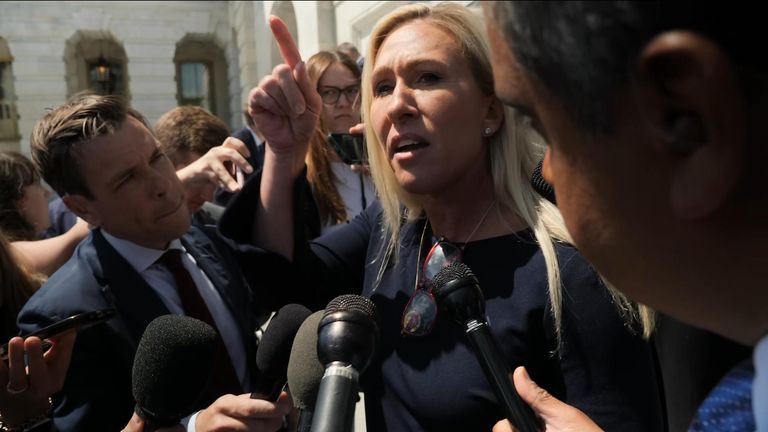
I spent the day driving north along the west coast of Florida from Fort Myers.
The coastline from Fort Myers to Tampa and beyond was part of the evacuation zone as authorities warned of a once-in-a-generation storm and meteorologists tried to determine where it would hit.
According to meteorologists, Milton was behaving very unusually. This worried them. During the night, as it approached the coast, it also swayed north and south, which added to the anxiety.
Latest – Biden tells Trump to 'get a life' and help storm victims as death toll rises
The only encouraging news that night was a reduction in intensity from a Category 5 to a Category 3. This reduced the wind impact, but not concerns about a storm surge engulfing low-lying areas.
We first stopped in Punta Gorda, where boats capsized in the marina, but there was no major structural damage. They dodged a bullet here.
Further north, the coastal highway runs through Venice. There we found streets littered with palm fronds, tiles torn off roofs, and billboards, but again, no major damage.
Casey Key lies north of Venice and is accessible by bridges from the mainland. When we arrived it was closed to traffic.
On foot, we joined the National Guard and the local sheriff as they went from house to house, checking to see if anyone was trying to wait out.
The storm surge rushed into homes here, but locals we talked to guessed it was only a foot or two high. Much lower than they had feared, about the same level as Hurricane Helene's surge two weeks ago, which was a huge relief for them.
Checking major bridges for structural damage is important, but by the time I arrived, authorities had opened the Sunshine Skyway Bridge leading north to St. Petersburg.
In Saint Petersburg itself, the main object of interest is the Tropicana Field stadium. It was home to Major League Baseball's Tampa Bay Rays and served as a shelter for first responders, but the storm ripped off the soft roof.
Read more:
The peak of hurricane season is behind us, but more may be coming
Hurricane Milton hits Florida with winds of 200 km/h
All in all, Florida's west coast was very lucky. This is partly because so many people followed the advice and evacuated.
Of course, there is a danger that people may feel that the warnings were exaggerated. The mayor of Tampa warned people that if they stayed, they would die. Over the top? People stayed and didn't die. We talked to people who said it was all exaggerated – as usual, politicians and the media are to blame.
I wonder if the massive storm warnings this time are not in part an overcorrection by the Biden administration after the extraordinary disinformation campaign waged by Donald Trump and his cohorts.
Over the past few weeks since Hurricane Helene, he has argued that federal authorities are obstructing rescue and recovery efforts, despite the facts.
And his deputy, Georgia congresswoman Marjorie Taylor Greene, wrote on social media: “Yes, they can control the weather” and added: “It's ridiculous that anyone would lie and say they can't.” It's not entirely clear who “they” are.
The FEMA administrator stated that these plots were “the absolute worst I have ever seen.”
Hurricane Milton could have been huge, that's true, and given this wave of conspiracy theories, especially about the government's failures during Helene, they absolutely had to be prepared (over-prepared?) for it.
The hurricane was not the storm people feared. But the storm of American politics is just getting started. Less than a month until the elections.



